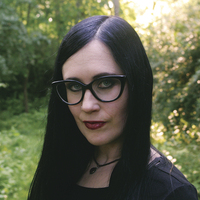Spirits in the Air
Readers, please enjoy this guest blog post by Astrea Taylor, author of Intuitive Witchcraft and the new Air Magic.
 Ancient people from all over the world believed the air was full of spirits. A mere gust of wind could contain the spirits of the dead, elemental spirits, nature spirits, the spirits of place, protective spirits, instructive spirits, and trickster spirits. This belief began during the first human mindset—animism, in which everything is alive and intelligent.
Ancient people from all over the world believed the air was full of spirits. A mere gust of wind could contain the spirits of the dead, elemental spirits, nature spirits, the spirits of place, protective spirits, instructive spirits, and trickster spirits. This belief began during the first human mindset—animism, in which everything is alive and intelligent.
When pre-historic people developed Pagan religions, they gave names to the spirits that flew on the wind, as well as characteristics, stories, and a human or animal likeness. People created rituals to interact with them and receive their blessings. Some of these air spirits controlled the winds and the weather, such as the air dragons in China. Many of these new air spirits or deities had traits that merged air with correspondences related to the element of air. For example, Athena, the Greek goddess of wisdom, translates to both “air” and “mind of the divine.”
The air-spirit connection was reinforced in myths and legends such as the Norse Wild Hunt, in which Odin leads a brigade of spirits who ride ghostly horses on the howling winds. The air-spirit link is also clear in the Irish lore of the spirits known as the Sidhe or the Fae, which translate to “gust of wind” and “folk of the air.”1
Other ancient etymological records reveal the connection of air, breath, and spirit. At one time, these three concepts were thought of as one, with air literally sustaining human spirits through the breath. This association can be found in ancient words such as the Latin animas and spirair, the Greek psyche and pneumea, the Hebrew ruach, and possibly the Chinese chi.
In the Middle Ages, Church records show some people shared their experiences of nighttime flight through the air as spirits. Remarkably, they reported that they flew through the air with several other spirits including animal spirits, supernatural beings, the spirits of other people, and sometimes even the goddess Diana.
Over the past several centuries, the Church and reductionist philosophies have denigrated the spirits of the air, condemning them to be evil spirits or mere fantasy. However, with the rebirth of witchcraft, a renewed interest has arisen in learning more about the spirits who reside in the air around us and our potential to interact with them.
Raven Grimassi, a Neo-Pagan writer, wrote that these spirits can teach witchcraft to those who are worthy—they speak to us “on the voice of the wind.”2 Although we should utilize protective measures when working with unfamiliar spirits, it’s a small step to take to gain access to the boundless wisdom of the spirits of air.
1. Ottis Bedney Sperlin, Studies in English-World Literature, (New York: Century Company, 1923), 268.
2. Grimassi, Raven. “The Craft of the Witches.” Llewellyn. Published September 1, 2020. Accessed April 28, 2020. https://www.llewellyn.com/journal/article/423.
Our thanks to Astrea for her guest post! For more from Astrea Taylor, read her article “How To Work With the Magical Element Of Air.”









